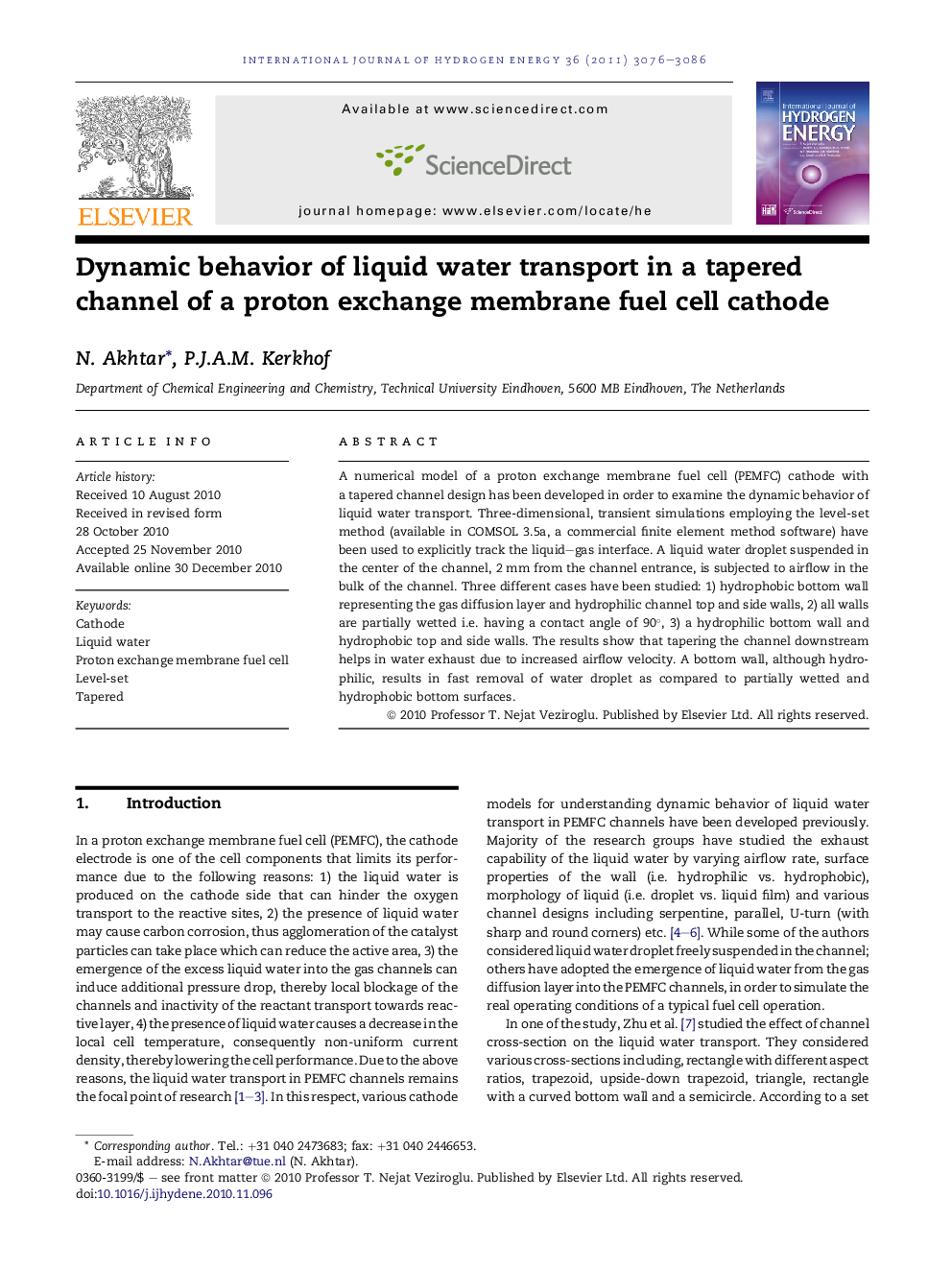| Article ID | Journal | Published Year | Pages | File Type |
|---|---|---|---|---|
| 1276421 | International Journal of Hydrogen Energy | 2011 | 11 Pages |
A numerical model of a proton exchange membrane fuel cell (PEMFC) cathode with a tapered channel design has been developed in order to examine the dynamic behavior of liquid water transport. Three-dimensional, transient simulations employing the level-set method (available in COMSOL 3.5a, a commercial finite element method software) have been used to explicitly track the liquid–gas interface. A liquid water droplet suspended in the center of the channel, 2 mm from the channel entrance, is subjected to airflow in the bulk of the channel. Three different cases have been studied: 1) hydrophobic bottom wall representing the gas diffusion layer and hydrophilic channel top and side walls, 2) all walls are partially wetted i.e. having a contact angle of 90°, 3) a hydrophilic bottom wall and hydrophobic top and side walls. The results show that tapering the channel downstream helps in water exhaust due to increased airflow velocity. A bottom wall, although hydrophilic, results in fast removal of water droplet as compared to partially wetted and hydrophobic bottom surfaces.
